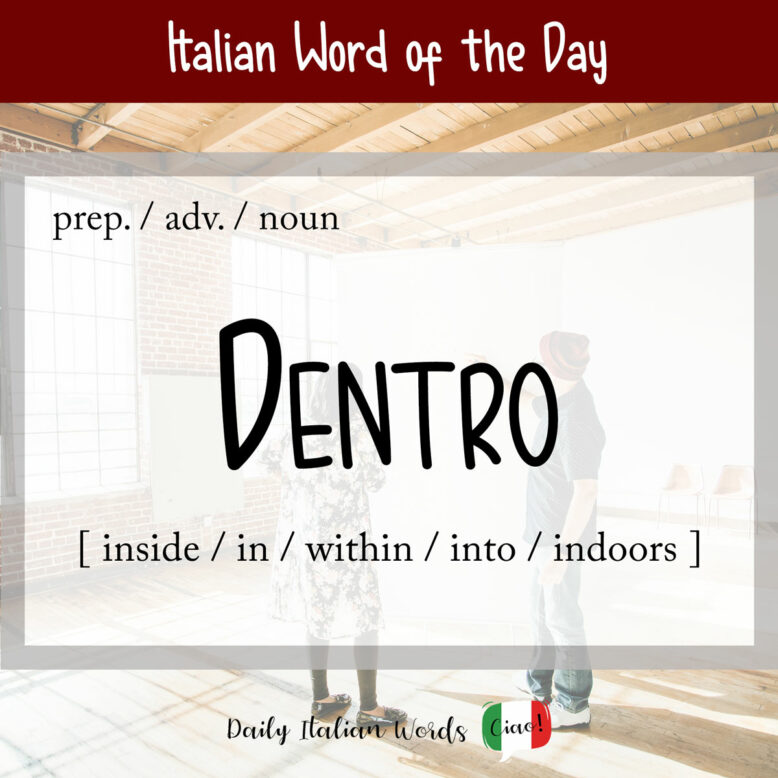Today, we’re exploring a highly versatile word that can function as a preposition, an adverb, and a noun: dentro. Depending on the context, it can be translated as inside, into, within, indoors, or simply in.
dentro
inside / in / within / into / indoors

According to strict grammar rules, dentro, when used as a preposition, can be constructed either directly (e.g., il giocattolo è dentro la scatola) or with the aid of the preposition a (e.g., il giocattolo è dentro alla scatola). However, the preposition di is used before personal pronouns, as in dentro di me (inside me), dentro di te (inside you), and so on.
Ho messo la spesa dentro il baule della macchina.
Ho messo la spesa dentro al baule della macchina.
I put the shopping inside the trunk of the car.
Il mio portafoglio è dentro (a) quel cassetto.
My wallet is inside that drawer.
Ho una strana sensazione dentro di me.
I have a strange feeling inside me.
Note that in informal Italian, especially in the northern regions, you may hear dentro in or dentro nel (e.g., dentro nell’armadio instead of dentro l’armadio or dentro all’armadio), but these forms are not accepted in formal Italian.

Next we have dentro as an adverb, where it is often seen in the following expressions:
- andare dentro = to go inside
- venire dentro = to come inside
- qui dentro = in here
- là dentro = in there
- con dentro X = with X inside
Venite dentro che fa freddo!
Come inside, it’s cold!
You will also hear it used figuratively to refer to one’s inner emotions or feelings, as in sentire qualcosa dentro (to feel something inside) or tenere qualcosa dentro (to keep something inside).
If you say someone è dentro, it can literally mean that someone is inside a building. However, it can also be used figuratively to imply that someone is in prison—without explicitly mentioning the word carcere (prison).
Mario è dentro da cinque anni.
Mario has been in prison for five years.
Finally, dentro is also an informal way of referring to the interior of something, such as a building or structure, and in this case, it is a noun. In more formal Italian, you should use la parte interna (the internal part) or l’interno (the interior).
Il dentro deve essere bello come il fuori.
The inside must be as beautiful as the outside.

Idiomatic expressions using ‘dentro’
Ci sono dentro fino al collo
Literal translation: I am inside up to my neck
English meaning: I’m up in it to my neck
Darci dentro
Literal translation: to give it inside
English meaning: to slog away / to work hard
Mettere dentro
Literal translation: to put inside
English meaning: to put in prison
Heather Broster is a graduate with honours in linguistics from the University of Western Ontario. She is an aspiring polyglot, proficient in English and Italian, as well as Japanese, Welsh, and French to varying degrees of fluency. Originally from Toronto, Heather has resided in various countries, notably Italy for a period of six years. Her primary focus lies in the fields of language acquisition, education, and bilingual instruction.


